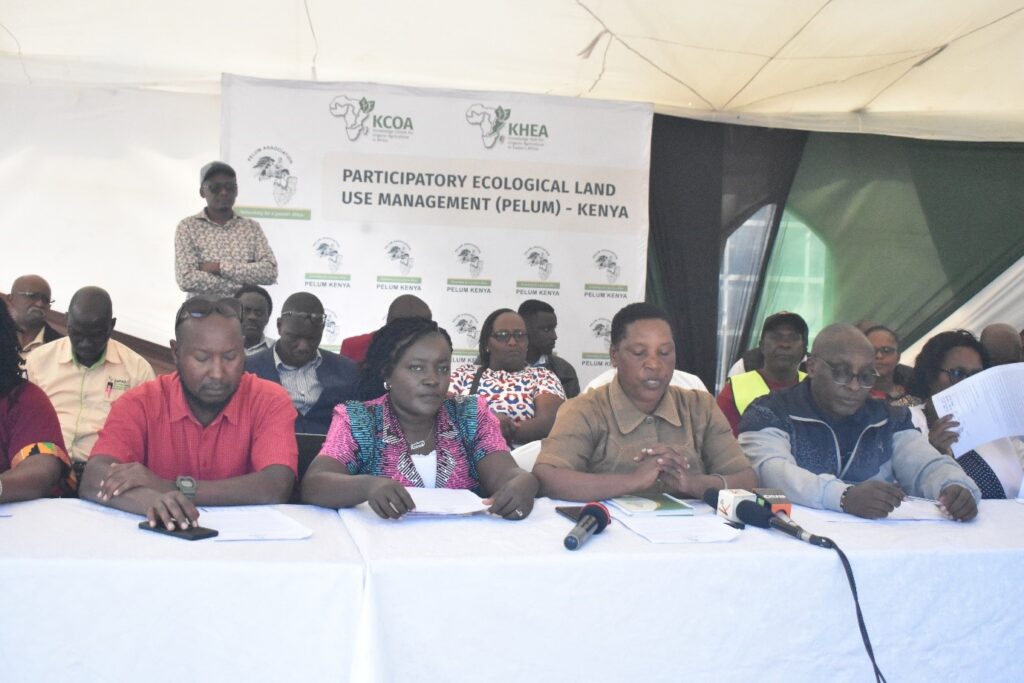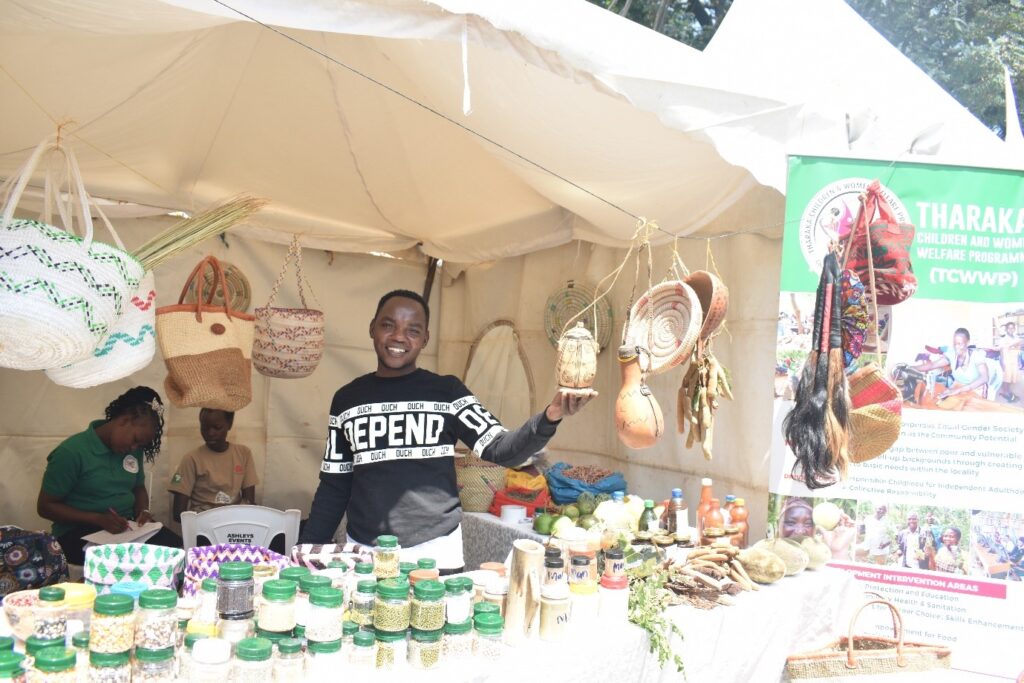How Ecological Land Use Management and Regenerative Agriculture Intertwine
5 February 2025
Rosinah Mbenya is the Country Coordinator for the Participatory Ecological Land Use Management (PELUM) Kenya Association, a national network of 63 civil society organizations – including NGOS, and faith and community-based organizations – that promote agroecology among small-scale farmers and pastoralists. Founded in 2002 with the goal of uniting agroecology organizations to improve coordination and progress, PELUM aims to create empowered, prosperous and healthy communities in Kenya.
In this blog, Rosinah details how PELUM is now at the forefront of efforts to advance the rights of small-scale farmers and pastoralists in Kenya, while also serving as an educational hub to explore agricultural practices. She delves into how ecological land use management can support an equitable food systems transition, and highlights how resources like Regen10’s Outcomes Framework can empower smallholder farmers and support sustainable development.
What is Ecological Land Use Management?
Ecological land use management (ELUM) promotes farming that works in harmony with nature, using cultivation techniques and breeding programs that do not rely on synthetic chemical fertilizers, pesticides or herbicides, or artificial genetic modifications. It combines tradition, innovation and science to benefit the shared environment and promote fair partnerships and a good quality of life for everyone.
There are many benefits to using ELUM, both for the environment and the livelihoods of communities. This includes:
1. Improved Soil Health
- Increased fertility: ELUM promotes practices like crop rotation, cover cropping, and the use of organic fertilizers, which improve soil structure and fertility over time.
- Soil erosion prevention: Sustainable land management techniques such as contour farming and agroforestry reduce soil erosion, protecting topsoil and maintaining long-term productivity.
2. Biodiversity Conservation
- Habitat conservation: ELUM ecosystem services, such as pollination, maintain water regulation by supporting plant reproduction, which helps preserve soil structure and reduces runoff, allowing better water infiltration. They also help safeguard native species and protect them from agricultural expansion.
- Resilient ecosystems: Spraying synthetic pesticides does not only kill pests and bacteria – it can also kill honeybees, earthworms and other species that are integral to keeping our ecosystems working effectively. ELUM focuses on preventative approaches to getting rid of pests, such as increasing biodiversity and natural pest control, reducing reliance on harmful chemicals.
3. Water Conservation
- Efficient water use: Practices such as mulching, agroforestry, and sustainable irrigation techniques, including rainwater harvesting, reduce the amount of water that is lost through evaporation.
- Water quality: Agricultural run-off (when excess water from farmlands runs into streams and rivers) is a leading cause of pollution. ELUM helps safeguard freshwater resources by reducing this run-off, which protects species that depend on aquatic ecosystems.
4. Climate Change Mitigation and Adaptation
- Carbon sequestration: Techniques like agroforestry and organic farming help sequester carbon in soils and trees, reducing greenhouse gas emissions.
- Resilience to climate extremes: Planting a diverse mix of crops improves resilience to extreme weather events like droughts and floods. Agroecology boosts biodiversity and reduces dependence on monocultures, making food systems more resilient to climate change.
- Prevention of land degradation: Sustainable land use reduces desertification, salinization, and other forms of land degradation that occur due to improper land management practices.
5. Sustainable Agricultural Productivity
- Long-term yield stability: ELUM maintains and even improves agricultural yields over time by fostering healthy soils and ecosystems, which can support crop growth without the need for high levels of synthetic chemicals.
- Reduction of input costs: Farmers subsequently have less need to rely on expensive synthetic fertilizers, pesticides, and water resources, making farming more affordable and sustainable in the long term. However, farmers will need financial support to help them cover the initial costs associated with moving to sustainable approaches.
6. Social and Economic Benefits
- Improved livelihoods: Sustainable food systems use labour-intensive practices like crop rotation, creating more jobs for local communities whilst boosting local food security and driving local economic growth.
- Community empowerment: Local communities are often involved in decision-making processes related to land management, fostering a sense of ownership and responsibility for natural resources.
 ELUM in Action: The Story of Lucy Wanjiku
ELUM in Action: The Story of Lucy Wanjiku
For many years, Lucy Wanjiku, a tea farmer in Murang’a County, Kenya, faced the persistent threat of landslides due to her land’s slope towards the river. These landslides caused substantial yield losses, hindering her ability to farm productively.
SACDEP Kenya, an organization which aims to facilitate sustainable development in East Africa, provided assistance through a program that focused on providing comprehensive training for farmers, including cover cropping and addressing soil erosion by restoring riparian lands.
SACDEP Kenya provided Lucy with cover crops and vetiver grass, which has long roots that absorb and filter water. By holding the soil together, these plants prevented it from being washed away by the rain, helping the community to overcome the challenges of constant landslides.
Lucy’s approach now extends beyond conventional farming methods, and she passionately encourages fellow farmers to explore varied agricultural activities for improved returns. Her innovative approaches include a comprehensive diversification strategy, such as raising rabbits, chickens, and cows. The manure from these animals serves as a valuable resource, making the soil even richer and more fertile.
Lucy Wanjiku’s journey epitomizes the transformative power of diversification and sustainable farming practices, showcasing the potential for increased yields and enhanced livelihoods in Murang’a County.
Collective Advocacy for Smallholder Farmers

Stories like Lucy’s showcase the importance of regenerative and agroecological approaches. But to scale these up, public financing and policy frameworks should integrate ELUM principles, as emphasized by organizations like PELUM Kenya.
A good place to start would be redirecting subsidies that traditionally support conventional farming towards practices that align with ELUM, such as agroecology. Additionally, public financing mechanisms should offer low-interest loans and grants specifically for farmers adopting ELUM approaches, which could fund community-based ecological practices like composting and sustainable water management systems.
Public funding for research should also prioritize farmer-led or participatory models that ensure innovations are practical, locally adapted, and scalable for smallholder farmers. By aligning public financing and policy with ELUM principles, governments can foster resilient agricultural systems that enhance soil health, biodiversity, and community livelihoods.
PELUM Association has undertaken various advocacy efforts to promote sustainable agriculture and influence policies that benefit smallholder farmers. This includes calling on policymakers to integrate agroecology into national agricultural policies, organizing training workshops that empower farmers with sustainable practices, and championing local knowledge to enhance regenerative agriculture.
Advocacy plays a critical role in advancing ELUM as a sustainable solution to the challenges faced by global food systems and is essential for transforming agricultural systems towards agroecology. It builds momentum for policy change, empowers farmers, raises public awareness, and supports the development of resilient and sustainable food systems.
Organizations like Regen10 can support PELUM’s work by collaborating on research and knowledge sharing, and joining forces in policy advocacy to amplify farmers’ voices. At PELUM, we recently partnered with Regen10 to create a Transition’s Pathways analysis focusing on the landscape of the Murang’a County in Kenya, with the work aiming to assess and highlight the costs and benefits of transitioning a Kenyan landscape to regenerative or agroecological practices. Regen10’s capacity-building initiatives and awareness campaigns that raise the profile of regenerative agriculture, including their Outcomes Framework and Transition Pathways analyses, will ultimately help to empower smallholder farmers and promote sustainable development.
References: Participatory Ecological Land Use Management (PELUM) Kenya. December 2023. Transformative Impact of the IWAMA Project On Farmers’ Livelihoods And Aberdare’s Ecosystem
At PELUM, we recently partnered with Regen10 to create a Transition’s Pathways analysis focusing on the landscape of the Murang’a County in Kenya, with the work aiming to assess and highlight the costs and benefits of transitioning a Kenyan landscape to regenerative or agroecological practices.
